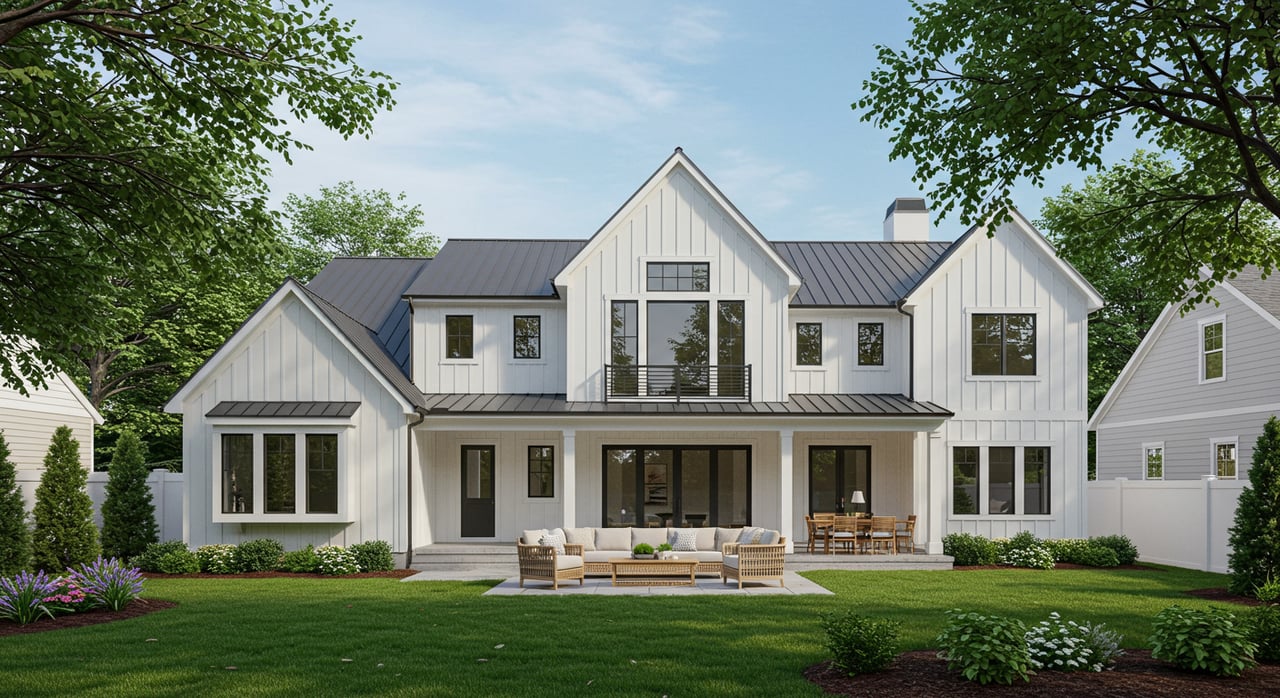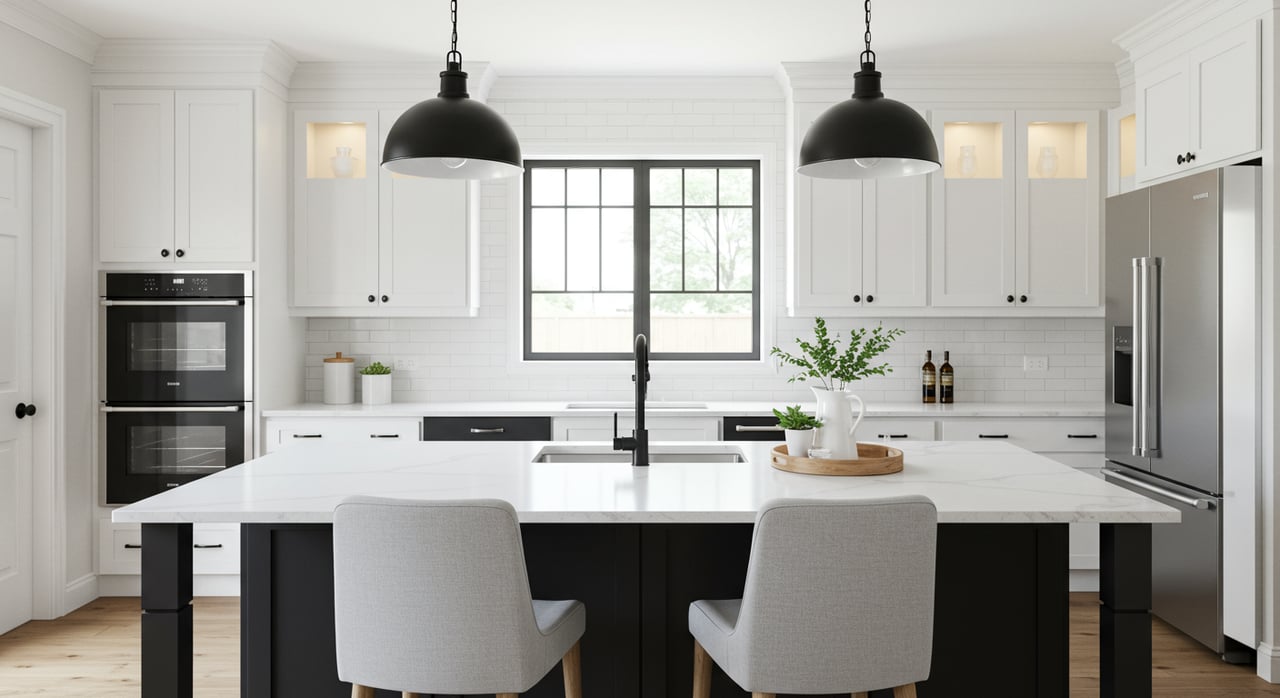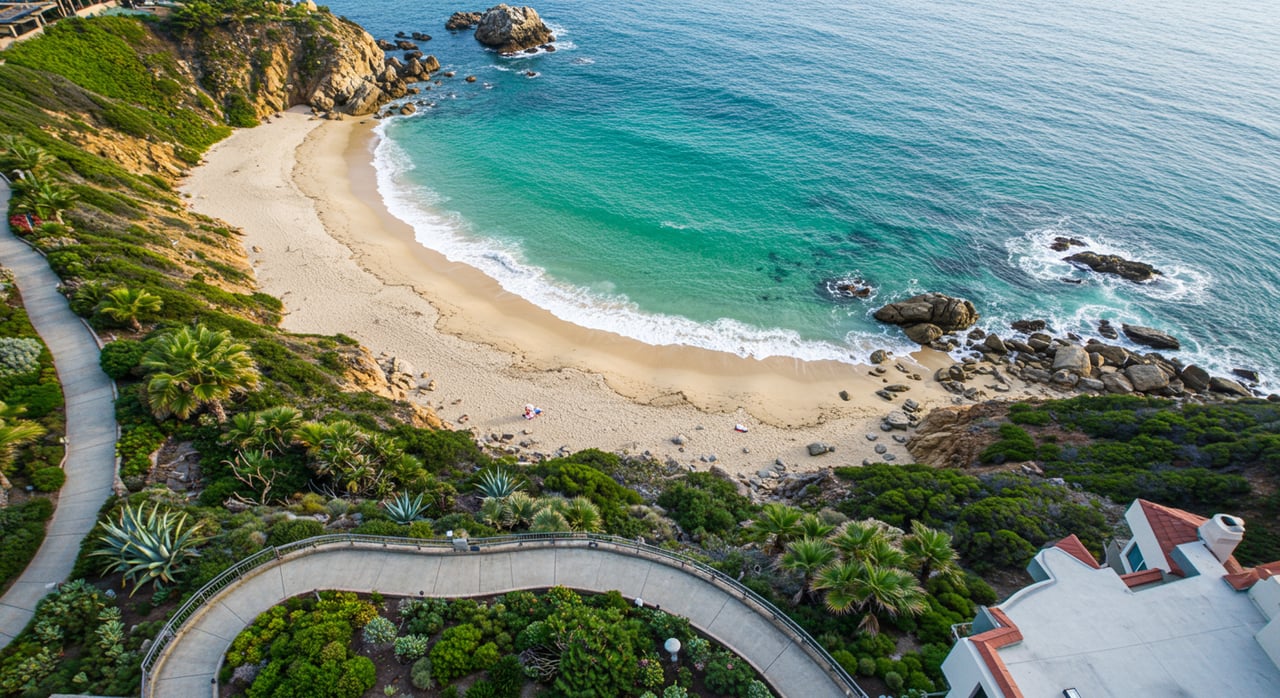Costa Mesa has been nicknamed the "City of the Arts" due to its vibrant world-class entertainment and performing arts scene. It encompasses 16 square miles and is conveniently located between Los Angeles and San Diego, close to the Pacific Ocean and many of Southern California's major attractions. Costa Mesa architecture is as unique as the neighborhoods, offering a distinctive blend of housing opportunities ranging from small adobes to luxury contemporary estates with stunning features. The median home value is $870,000.
Neighborhoods in Costa Mesa
Located along the northern edge of Costa Mesa is the trendy Eastside region. Modern single-family homes have replaced many of the smaller, older cottages, and new construction is limited to lots of 6,000 square feet as part of a land use preservation act. The focal point of this eclectic area is 17th Street, which features boutique shopping and upscale dining.
Contemporary multi-million dollar luxury mansions are the norm in this affluent community. The Westside of Costa Mesa was once home to boat builders and businesses that supported a thriving industrial center. Today, the neighborhood features chic art studios, small businesses, and repurposed buildings that host revamped social spaces and eateries.
In College Park, many street names are derived from prestigious universities, such as Notre Dame, Cornell, and Villanova. The area bustles with activity and is close to the Orange County Fairgrounds and the Segerstrom Center for the Arts, two hot spots for entertainment. In the Mesa Verde section of Costa Mesa, historical adobe buildings stand out amidst the area's green open spaces.
Weber + Co has extensive knowledge of Costa Mesa and all its neighborhoods and can help you find a property that best suits your lifestyle.
History of Costa Mesa architecture
Costa Mesa was established in the early 1800s and is rich in heritage and culture. The diversity of the architecture throughout the region tells a story of the past while representing a vision for tomorrow.
One of the oldest buildings in Costa Mesa is the Diego Sepulveda Adobe, located at 1900 Adams Avenue. Built by the Mission San Juan Capistrano in 1820 to temporarily provide shelter for vaqueros (cowboys), the structure has stood the test of time. For centuries, a wooden cover has protected the first example of an adobe building in the area, which has since become a museum owned by the City of Costa Mesa. Today, the interior rooms represent the Indian, Mission, Spanish, and Victorian eras that influenced California's history.
The historical dwellings, commercial buildings, and private residences listed below represent some of the finest examples of Costa Mesa architecture:
1. Local modern
A hot trend in Costa Mesa architecture is local modern styles that utilize local resources and employ area craftspeople to create a sense of community. According to Architectural Digest, more and more people want homes that reflect the area's culture and "can coexist with surrounding historic and eclectic homes."
Many of the libraries in Orange County, built between 1951 and 1991, reflect modern architecture, varying in size and style. The Mesa Verde Library, designed in 1965 by Schwager Desatoff and Henderson, is a classic example. A distinctive zig-zag "folded plate" roof hovers over the main structure, and two symmetrical brick walls line the glassy entryway, inviting guests into the interior space. Inside, a modernistic cupola offers a mezzanine reading area with an angular roof that highlights clerestory windows for letting in natural light.
2. Modern farmhouse
The modern farmhouse style is in high demand throughout the United States and is ever-present in Costa Mesa architecture. Influenced by classic Colonial and Georgian styles, the gabled roofs found in barns and farmhouses have received a contemporary new look, with features such as vertical board-and-batten siding or contrasting color palettes.
The 8,013 square-foot Santa Isabel estate in Costa Mesa is a premier example of the modern farmhouse architectural style. Brandon Architects designed the home, replicating original brick structures while adding contemporary high-end elements. The barn and master wings divide the house into three distinctive styles, creating an eclectic look that fits seamlessly into the existing neighborhood.
The interior features a double-height, vaulted foyer that mimics traditional farmhouse construction with exposed trusses. The kitchen and open great room provide countless large glass pocket doors that combine the interior and exterior to create a unified entertainment space.
3. California bungalow
In 1890, San Francisco architect A. Page Brown created the first bungalow, a style embraced throughout the 1940s when companies such as Montgomery and Ward and Sears, Roebuck & Co. sold mail-order, pre-cut homes for as little as $900. The pre-fab product was shipped to a site for assembly by local carpenters.
Current bungalow architecture is influenced by the Arts and Crafts movement, emphasizing a horizontal link between the land and the house. Natural colors and locally-sourced materials provide a home-earth relationship. The features of this style of housing include the following:
- A low, sloping roof with overhanging eaves.
- Exposed beams or rafters.
- Constructed of stucco and wood instead of brick.
- Modest front porch.
- Informal, open floor plan.
- Focus on a small garden in the yard.
- Spanish Colonial motif with Craftsman lines.
4. Contemporary glass
In the second half of the 20th century, glass homes and commercial buildings became a popular and highly sought-after style of architecture. With an intense connection to nature, the structures offer total transparency, with entire windowed walls providing an exquisite view of the outside world. The primary elements of contemporary glass architecture include:
- Clarity.
- Simplicity.
- Natural Light.
The Segerstrom Center for the Arts is a premiere example of contemporary glass Costa Mesa architecture. The 3,000-seat performing arts hall opened in 1986 and has since been expanded and updated. The dynamic campus features the Renee & Henry Segerstrom Concert Hall, designed by architect César Pelli in 2006. The vibrant limestone structure showcases a tall glass lobby with an entrance made entirely of glass, showcasing ever-changing reflections and transparencies. Inside, three silver-leafed, acoustical canopies form a shimmering ceiling that reflects the silvery metal of the pipe organs, creating a fluid movement in sound and design.
5. Industrial
Industrial or essentialism architecture is best described as a space that offers open, thoughtfully designed interiors with clever organization solutions devoid of visual interference. Portraying a sense of minimalism free of the distractions of the digital and outside world is the goal of this style of architecture. Material choices and exterior facades reflect simple, clean lines with living/working spaces that are open and airy.
Rexford Industrial at The MET is a 9,230-square-foot office space built for an industrial developer in Costa Mesa. The building features concrete floors, exposed ductwork, rich wood accents, and pops of color to create an open space that showcases a modern industrial atmosphere.
Discover the Costa Mesa architecture that best suits your personality and lifestyle with the help of Weber + Co
The professional, experienced real estate team at Weber + Co can help you discover the beauty of Costa Mesa architecture and find a property that meets your needs. Our team's unique background provides our clients with buyer prospects, access to off-market properties, and assistance with potential development projects.
Contact us today to learn more about Costa Mesa and the beautiful homes that await you in this friendly Southern California community.
*Header photo courtesy of Shutterstock




